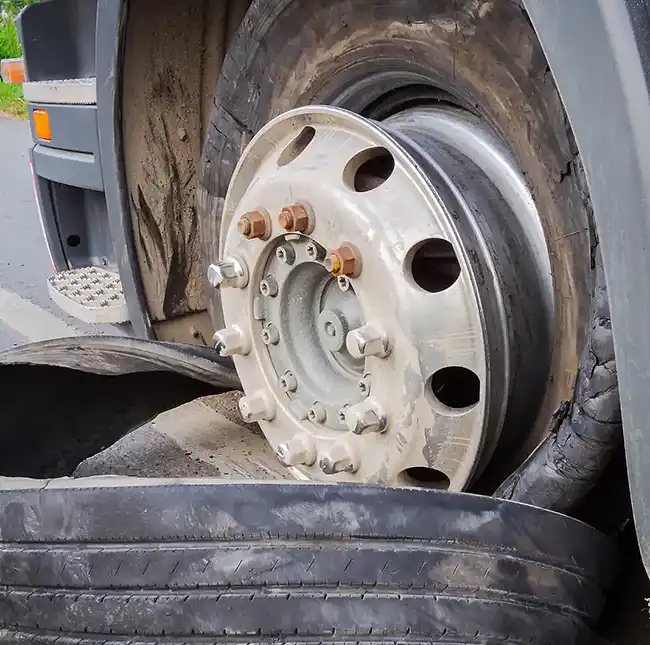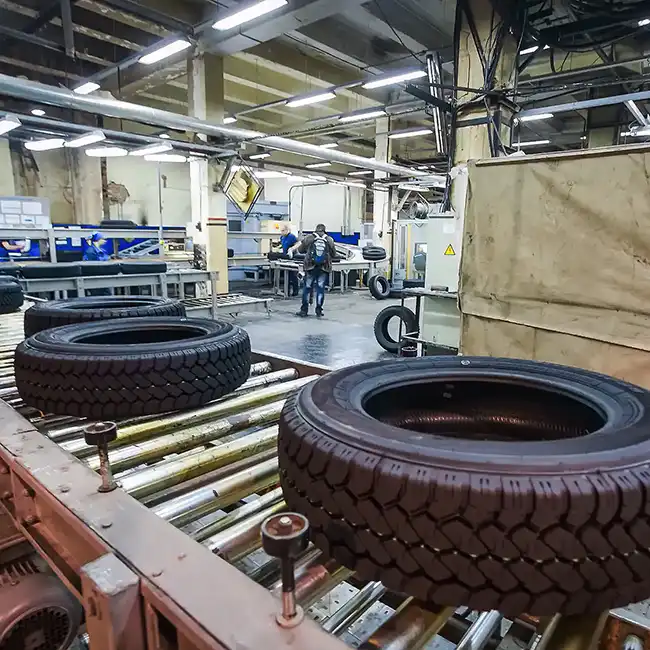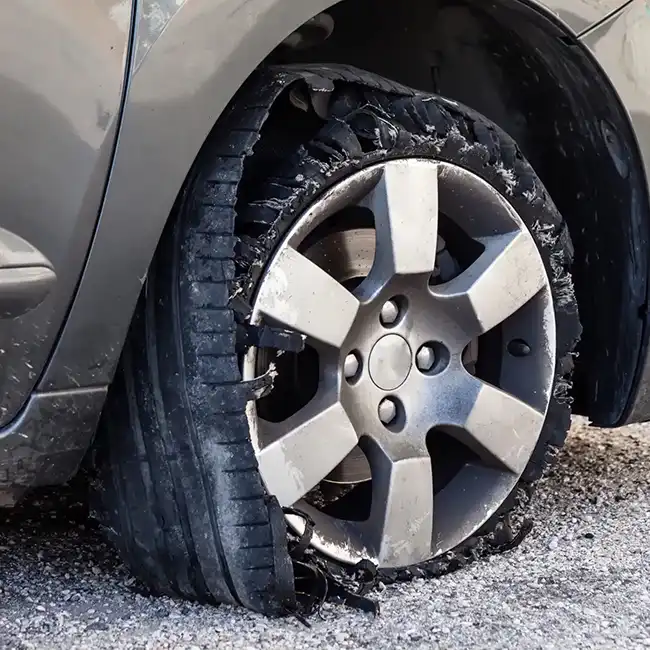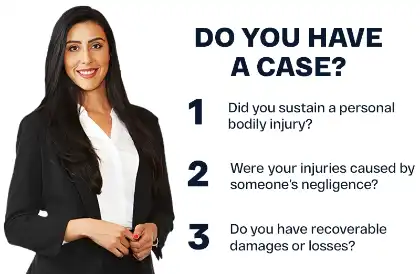California Defective Tire Injury Attorneys
- PAY NOTHING UPFRONT
- OVER $0 MILLION RECOVERED
- ZERO-FEES UNTIL WE WIN
We’ll tell you if you have a case or not, call (888) 488-1391 — We’re here 24 hours a day.
Our California Defective Tire Injury Attorneys Help Accident Victims Make Informed Choices.
Tires are crucial to maintaining a properly functioning vehicle. Tires serve as the foundation of your vehicle, and if you keep them properly maintained, then you can ride for many miles. On the other hand, if your tires are defective, you may face potential property damage, serious bodily injury, and even death. In the event of a sidewall failure, tire detachment from the rim, or belt separation, consulting defective tire injury attorneys can help you understand your legal options.
The road to recovery after an accident can be complex and challenging. It may be difficult to know what steps to take to protect your legal rights following a defective tire incident. With years of experience handling tire injury cases, our lawyers can review your situation and explain potential legal steps. You can reach our legal team for a free case evaluation at (888) 488-1391.
How Are Tires Made?
To ensure your tires are properly maintained, being informed about how tires are made is essential. You may not know the components of tires, especially if you aren’t a mechanic or you do not work in an industry where close attention to tire maintenance is necessary, such as with truck driving or driving a rideshare. Here is a quick rundown of each component of a tire:
- Inner Liner — The inner liner is the inside layer of a tire. If it is not defective, the inner liner should seal air out of the tire.
- Body Ply — The body ply is the body of the tire. It is made of a layer of rubber, a layer of fabric that reinforces the rubber, and a second layer of rubber. The body ply makes the tire strong.
- Tread — The tread is the part of the tire that meets the surface of the road. It plays an important role by helping water, ice, snow, and other debris escape from the tire’s surface. This improves traction and reduces the risk of slipping.
- Belt — You will find the belt between the tread and the body ply of your tire. The tire belt increases the tire’s resistance to wear and tear or other damage. A good tire belt prevents a puncture from immediately destroying the tire. For example, a good tire belt allows someone to keep driving their vehicle if a nail is stuck in the tire.
- Bead — A tire bead is a reinforced loop that sits near where the tire meets the wheel. It is made of rubber-coated steel. The purpose of a bead is to keep the tire on the wheel.
- Sidewall — You can find the name of the tire manufacturer and the tire size by looking at the sidewall. Its purpose is to protect the body ply.
- Shoulder — The tire shoulder is on the outside edge of the tread. It is wrapped around the sidewall. It protects and supports the tread and sidewall.
Signs Of A Tire Problem
Catching a problem with your tire can save you time, money, and, most importantly, your life. Try to keep your tires in good condition. Doing so will increase your likelihood of safe travel. Poorly maintained or defective tires lead to poor maneuvering and maybe even a tire blowout. Some signs you may be experiencing a tire problem include:
- There is visible damage to your tire, including cracks, bulges, blisters, or cuts.
- When you drive at high speeds (such as while driving on the interstate), you feel vibrations.
- There is a high-pitched squealing sound when you take a sharp turn.
Common Tire Design Defects
Some tires are defective because of how they are designed. Design defects are especially dangerous because these flaws are typically not found until someone is hurt or killed after something goes wrong. The occurrence of a recall usually gives manufacturers the opportunity to study what caused the defect. What follows are examples of common tire design defects.
- Inadequate Recalls — A recall is issued when a defect makes a product unsafe. Tire recalls aim to remove dangerous tires from the road and inform consumers if their tires may be defective. In some cases, recall notices may not reach all affected consumers promptly or clearly, which can increase the risk of accidents.
- Inadequate Inner Liner — The inner liner of a tire aims to retain air and maintain proper tire pressure. A defective or poorly designed inner liner can allow air to leak, which may cause premature tire wear, reduced performance, and an increased risk of blowouts.
- Lack of Cap Ply — The cap ply is a layer that strengthens the tire and helps keep steel belts in place. Tires without a necessary cap ply may be more prone to belt separation, tread issues, and reduced durability, especially under normal driving conditions.
- Defective Belt Skim Stock — The belt skim stock is a layer that helps bond the tire’s internal components together. If the belt skim stock is defective or improperly applied, it can weaken the tire structure, increasing the risk of component separation, premature wear, or tire failure.
- Lack of Belt Wedge — A belt wedge is a small layer used to keep the steel belts in a tire properly aligned and reduce friction between them. Tires without an adequate belt wedge may experience higher stress on the shoulder area, which can lead to overheating, premature wear, or structural problems over time.


Common Tire Manufacturing Defects
Sometimes, tires are unsafe due to a manufacturing defect. As with design defects, if a manufacturing defect is found in tires, a recall should happen. Examples of common tire manufacturing defects include the following.
- Improper Alignment — Improper component alignment can lead to accidents. Alignment issues only result from manufacturing defects. Using an incorrect amount of material in the belt package of a tire is an example of a manufacturing defect. Very rarely is a design defect responsible for improper alignment.
Contamination — If a tire has contaminated parts, the most likely explanation for the contamination is a manufacturing defect. Raw tire components must be protected from water and debris during the manufacturing process. When tires are uncured, they are very sticky, and any debris present can attach to them and cause significant damage. Similarly, if water and other liquids contact the steel wires or belts, the moisture can prevent proper bonding of each component during assembly. Improper construction can cause the tire parts to corrode before their expected expiration date.
Examples of contaminants that may be found in tire manufacturing facilities include:
- Stray wires
- Misplaced tools
- Loose screws and nails
- Discarded gloves
- Spilled chemicals
- Food items and wrappers
- Employees Fail to Include All Components — Manufacturing defects can occur when employees accidentally omit required components during tire assembly. Even with conveyor systems designed to streamline production, mistakes can happen if equipment malfunctions or the assembly process is disrupted. These errors can result in tires that are incomplete or structurally compromised.
Common Mistakes Made By Tire Service Centers
In addition to design and manufacturing defects, the acts of service centers may also cause dangerous tire defects. Keeping your vehicle road safe requires regular maintenance on your tires. Because most people are not confident in their ability to properly maintain their own tires, they turn to tire service centers to take care of the maintenance for them. Despite their professionalism, sometimes tire service centers make mistakes. Some of the most common mistakes that tire service centers make include the following:
- Putting new tires on the front of a vehicle and not rotating all four tires.
- Not removing a tire that is more than six years old to repair or replace it.
- Improperly patching a damaged tire.
- Selling a customer a defective tire.
- Patching the shoulder or sidewall.
- Failing to remove a tire if the tread is less than the legal 2/32 requirements.
- Failing to mount the tire to the rim of a vehicle securely.
- Mounting a tire on a vehicle that is a different size from all the other tires.
- Failing to warn a customer that a tire is not safe or suitable for its intended use.
- Mounting a tire that is either too big or too small for the vehicle.
If you suffered injuries in an accident caused by a defective or damaged tire, a lawyer can review your situation. They can assess the evidence and help you understand whether a claim against the service center might be possible.
Tire Blowouts
Blowouts are the most common issue drivers have if their tires have a design or manufacturing defect. A blowout happens when the tread separates from the rest of the tire. If you have a blowout, you may be looking at serious property damage. Even worse, you may get into a car accident that leaves you unable to work, with staggering medical bills, or permanent physical injury.
In addition to tread separating from the rest of the tire, tire blowouts can be the result of a defective bead. The bead is a vulnerable spot. The bead’s function is to hold the tire to the rim. A defective bead will cause a tire to deflate more quickly than a tire with a properly functioning bead. If the bead comes off one of your tires, you can lose control of your vehicle and get into an accident.
Reasons for Tire Blowouts
Tires blow out for many reasons. Some of the most common reasons for experiencing a tire blowout include:
- Unsatisfactory repair jobs
- Adhesion issues
- Manufacturing defects
- Design defects
- Tread separation
What Should I Do After A Tire Blowout?
Knowing how to respond safely can reduce the risk of injury and help you regain control of your vehicle. The following steps outline recommended actions to take immediately after a tire blowout:
- Stay calm. Panicking will only make the situation worse.
- Avoid slamming on your brakes. Instead, slowly come to a stop by easing your foot off the gas pedal.
- Ease over to the shoulder of the road or move to an area that helps you avoid traffic.
- Turn your emergency hazard lights on. Keeping your hazards on helps you remain visible even in low light or inclement weather.
- If there is enough room and you know the proper steps, you can safely change your tire yourself.
- After you get your vehicle to a safe area, call 911 if anyone suffers an injury.
- While you are waiting for emergency assistance, keep your distance from other vehicles.
How Can I Prevent A Tire Blowout?
The best way to deal with a tire blowout is to avoid it altogether. Every driver is encouraged to know the best ways to avoid tire blowouts. The following are some of the preventative measures that may keep you and your passengers safe:
- Look out for cracks and cuts in the tire’s rubber.
- Check for fabric breaks.
- Look for bumps or bulges due to internal damage.
- Look for any other visible damage.
- Maintain proper tire maintenance.
Who Is Legally Responsible For Causing A Tire Blowout?
A civil lawsuit is a legal remedy to recover damages after getting hurt because of another person or company’s negligence. In defective tire cases, there are multiple potentially responsible parties against whom you may bring a lawsuit. Here are a few:
The Other Driver
Every driver is responsible for properly maintaining their vehicle, including the tires. Before a driver hits the road, they should inspect their tires for obvious signs of damage, including tears, holes, exposed wire, or signs of deflation. If the tires are damaged and the driver fails to have them repaired or replaced, they may be responsible for paying for your damage should an accident happen
The Manufacturer Or Retailer
A manufacturer or retailer may be partially responsible for causing your injuries from a defective tire. Manufacturers have the legal responsibility to place safe and functional products in the marketplace. If they fail to do so, you may have a claim under product liability. Manufacturers may be to blame for an accident if the tire is poorly designed or built. They may have sole responsibility for paying for your damages if the driver kept up with their responsibilities and properly maintained their tires. Proving who’s at fault in product liability cases can be difficult. Most people injured by a poorly manufactured tire need an experienced civil litigator to assess their legal options and understand potential avenues for financial recovery.
Commercial Truck Drivers
Truck drivers are responsible for inspecting their tires before starting work each day. Failing to do so can increase the risk of accidents and may factor into liability if a tire defect contributes to a crash. Commercial drivers must also pay close attention to recall notices and ensure any defective equipment is repaired or replaced promptly.
If an accident occurs involving a commercial truck, the injured party may have a legal claim against the driver and, potentially, the trucking company. Under the legal doctrine of respondeat superior, an employer can share responsibility for harm caused by an employee while performing job duties. This doctrine can be relevant in cases where insurance coverage limits and financial recovery are considerations for the injured party.

Can I Sue Even If My Tire Blew Out?
You may think you cannot recover damages if your tire blows out. Even if your tire blew out during an accident, you might be eligible for compensation if you suffered an injury. It is possible for a tire manufacturer, designer, tire service center, or a third party to be responsible for your injuries. If you suspect your tire was the cause of the accident and, therefore, your injuries, consulting a defective tire injury attorney can help you understand your legal options.
What Damages Are Available In Defective Tire Cases?
If you are injured in an accident caused by a defective tire, you may be able to pursue a civil claim for damages. Damages are intended to compensate for losses and generally fall into two categories:
- Economic Damages (Special Damages) — Economic damages cover tangible, measurable losses that result from an accident. Examples include:
- Medical Expenses — Costs for medical treatment related to your injuries. Keeping records of bills and following your doctor’s instructions can help support your claim.
- Future Medical Costs — If ongoing treatment or rehabilitation is required, these anticipated expenses may also be included.
- Lost Income & Future Earnings — Wages lost due to missed work and any projected loss of future income caused by your injuries.
- Lost Earning Capacity — If an injury prevents you from working in your previous role or industry, you may recover damages for the reduced ability to earn.
- Cost of Domestic Help — Expenses for hiring assistance with household tasks you cannot perform due to your injuries.
- Property Damage — Repair or replacement costs for your vehicle or personal property damaged in the accident.
- Non-Economic Damages (General Damages) — Non-economic damages compensate for intangible losses that are harder to quantify. Examples include:
- Disfigurement — Compensation for lasting physical changes caused by the accident.
- Pain & Suffering — Physical and emotional stress resulting from the injury.
- Disability — Temporary or permanent limitations caused by the accident.
- Mental Anguish & Emotional Trauma — Emotional impacts, including anxiety, depression, or other mental health effects related to the accident.
- Loss of Consortium — Claims by a spouse or partner for the loss of companionship, emotional support, and other aspects of their relationship affected by the injury.
Compensation is not guaranteed, and outcomes can vary based on the circumstances surrounding the accident. Consulting with an experienced attorney can help you understand what types of damages may apply to your situation.
What About Nationwide Recalls For Defective Tires?
Several large companies have recalled tires in the past. Unfortunately, these recalls often occur after defects are discovered during use, sometimes linked to accidents or safety concerns. Some major companies that have had tires recalled recently include:
The National Highway Safety Administration (NHTSA) keeps online records of national recalls for automotive parts, including tires. If you experience problems with your tires, you can report your issues to the NHTSA. Reporting helps keep you safe and other drivers safe, too. Reporting also allows the NHTSA to keep records of problems and identify patterns of manufacturing and design defects.
You can also learn about tire defects by contacting the tire manufacturer online and entering the manufacturing identification number located on the sidewall of the tire. You can visit their website, where you can register your ownership of their tires. After registering, you will receive updates if your tires are recalled in the future.
How Can An Accident Attorney Help Me?
An attorney can guide you through the legal process after an accident. They can explain your rights, assess whether you may have a claim, and handle the legal steps involved. Some of the ways a defective tire accident attorney may assist include:
- Negotiations — Your defective tire injury accident attorney can manage settlement discussions with insurers or defense counsel. They prepare a demand letter and evidence package (medical records, bills, wage information, repair estimates, and, when needed, expert opinions), discuss a reasonable settlement range, and relay offers and counteroffers. They also advise you on options such as mediation or filing a lawsuit if talks stall. While many claims resolve through negotiation, outcomes vary, and no result is guaranteed.
- Communication — Your lawyer can manage communications with insurance companies, opposing counsel, and medical billing departments. It helps reduce the stress of handling frequent calls and paperwork so you can focus on your recovery.
- Trial Preparation — If a settlement cannot be reached, a defective tire injury attorney can prepare your case for trial. This may involve filing and responding to motions, conducting discovery, working with experts, and representing you in court. These steps require legal knowledge and careful planning to present your case.
Contact Our Defective Tire Injury Lawyers For A Free Initial Consultation!
You can speak with our California defective tire injury attorneys about your situation. Call us at (888) 488-1391 or complete our “Do I Have A Case?” form to schedule a free case evaluation. We can review the details of your accident and discuss what legal options may be available.





















